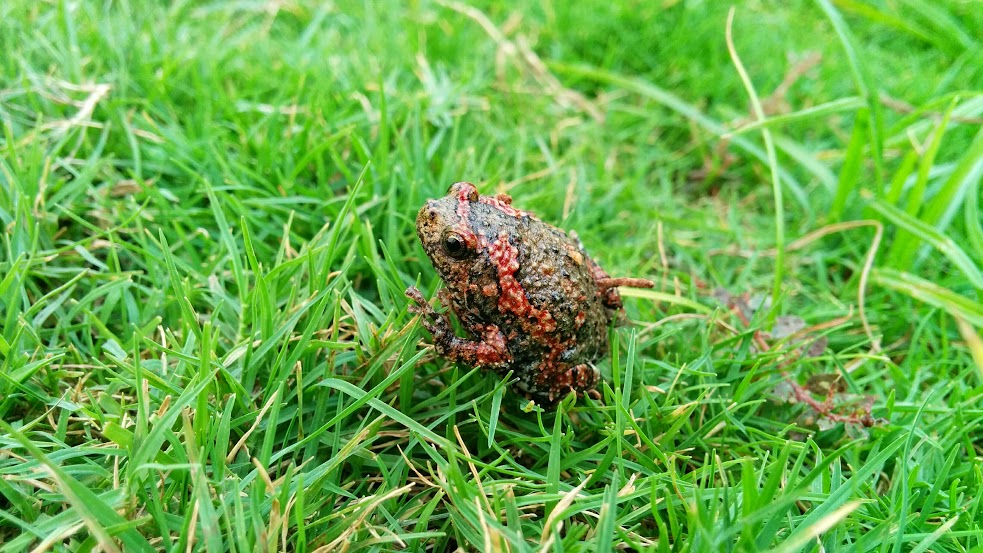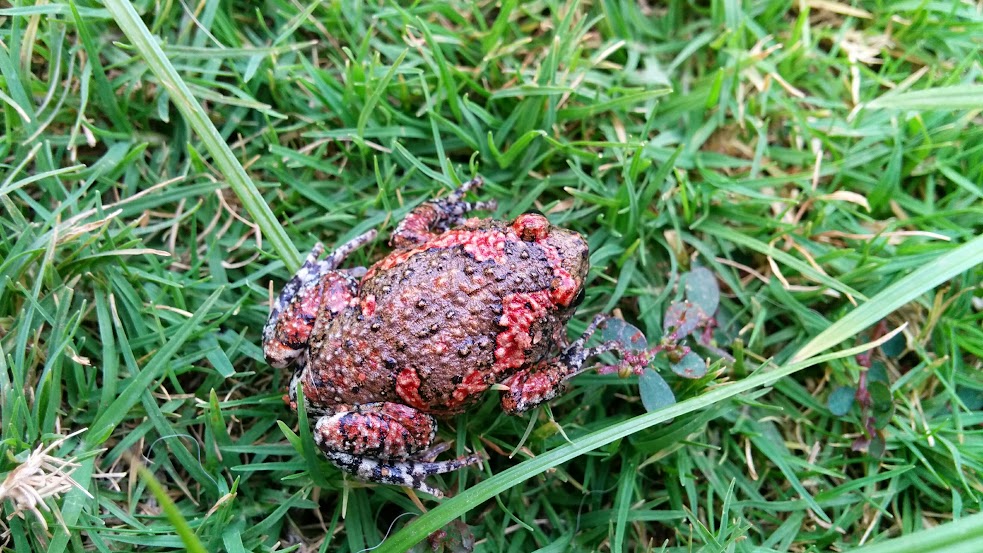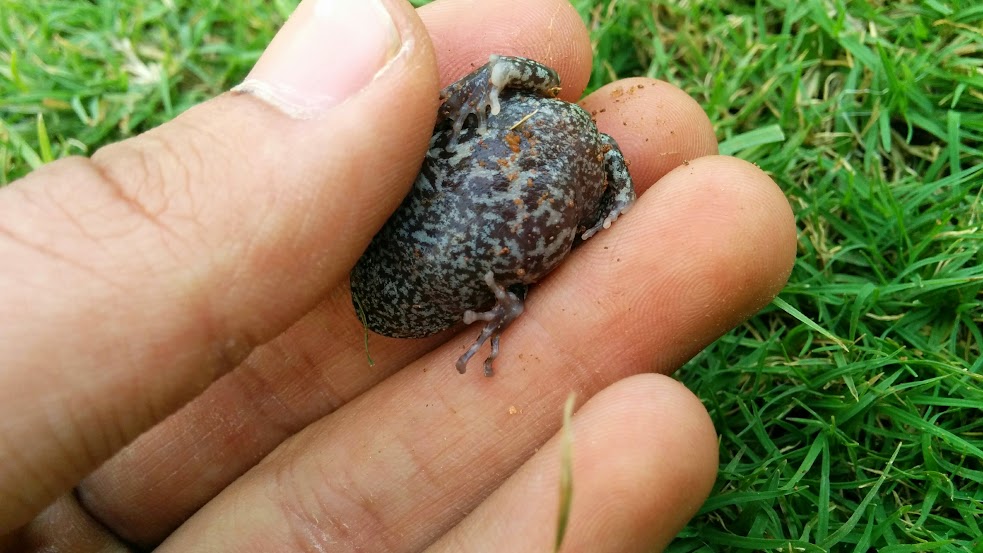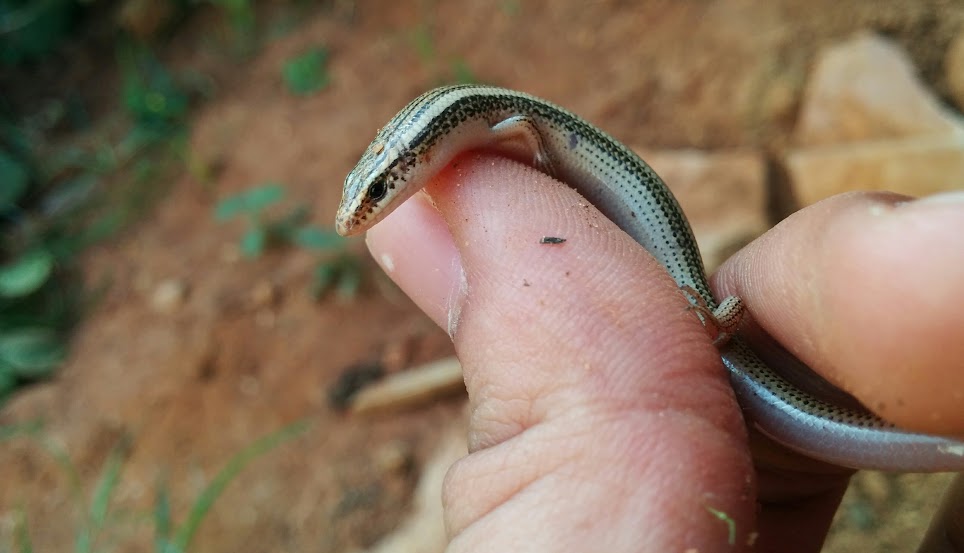 |
| Spotted Supple Skink |
Date:
December 25th 2014
Species Found
- Peninsular Rock Agama (Psammophilius dorsalis)
- Mysore Day Gecko (Cnemaspis mysoriensis)
- Asian Toad (Bufo melanostictus)
- House Gecko (Hemidactylus frenatus)
- Oriental Garden Lizard (Calotes versicolor)
- Spotted Supple Skink (Lygosoma punctatum)
- Brahminy Blind Snake (Ramphotyphlops brahminus)
- Sri Lankan Painted Frog (Kaloula taprobanica)
Background:
I am back in my house in Bangalore for Winter Break. Even though I have lived in Bangalore for 8 years, catching all kinds of animals, I didn't really document the herps I caught. I didn't start keeping a species list or taking detailed pictures till after I went to Illinois for college. During my stay in Bangalore, I planned to start my Indian Species List afresh and take good photos of all the species I grew up catching.
The Trip:
Well, it wasn't really a trip... I just walked around my backyard whenever I had time and looked around for herps.
The first herp I came across was a large female Peninsular Rock Agama. These lizards are lightning quick and have hooked claws good for gripping rough surfaces like the walls outside my house. It was a good thing my dog was with me because he helped me corner the large lizard behind some flowerpots. I grabbed the Agama and it promptly bit my hand. Its teeth are razor sharp but they aren't very long so the bite wasn't serious. I took the lizard to an area with smooth tiles so it wouldn't escape easily. (Its claws are great for running on rough surfaces but are virtually useless on smooth ones.) I took some pictures with my phone, which is no DSLR, but the picture quality is decent.
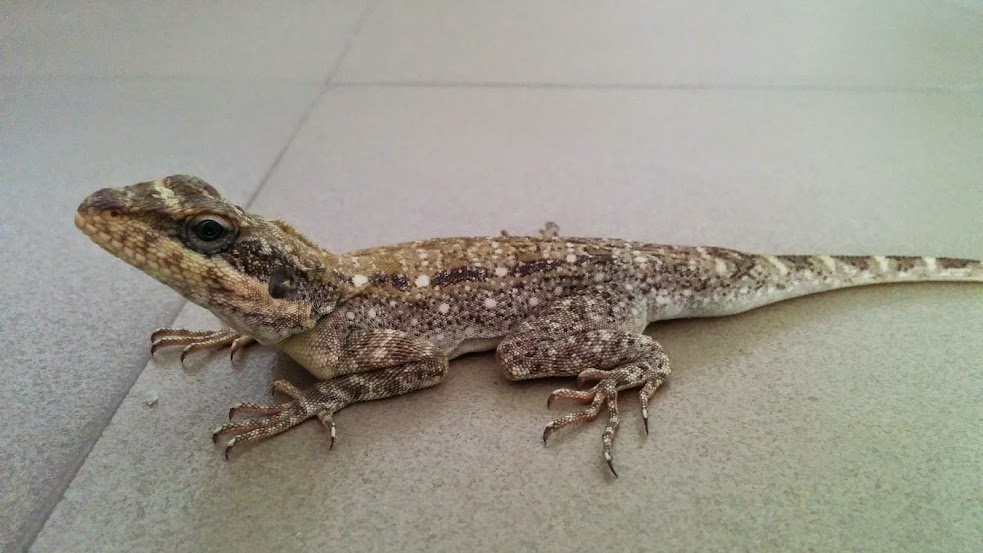 |
| Female Peninsular Rock Agama |
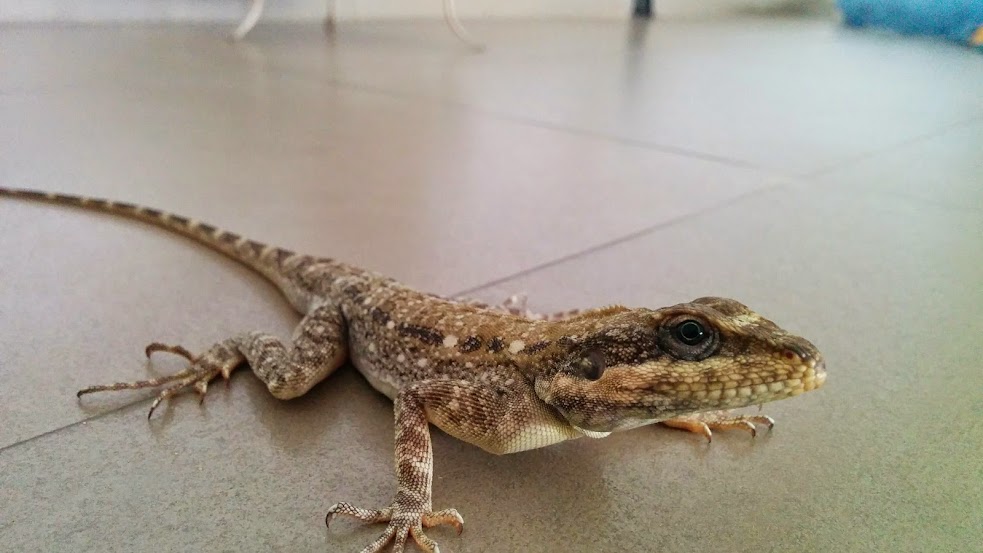 |
| Female Peninsular Rock Agama |
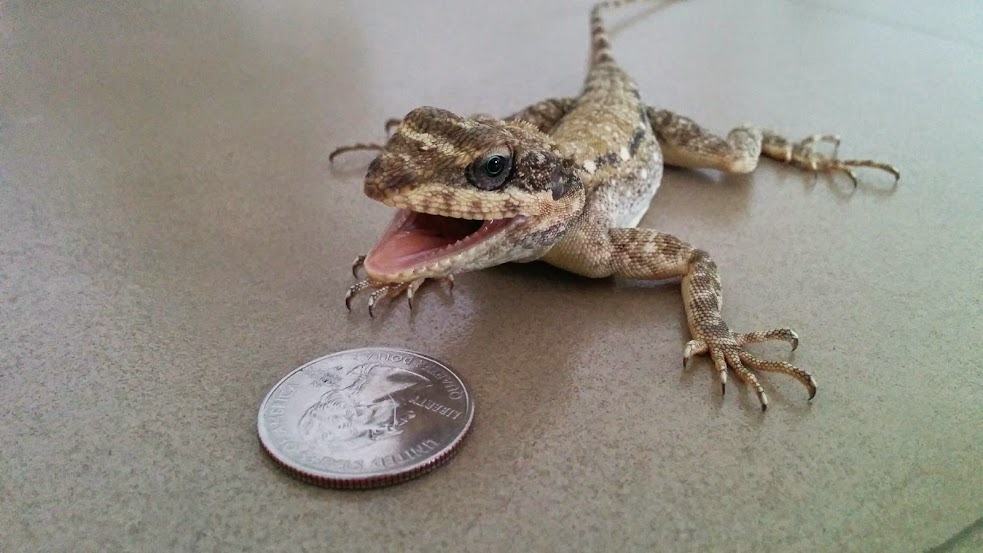 |
| Agama Teeth |
Soon, the Agama started to get kind of sluggish. It was tired from all the failed escape attempts. I decided to move it onto the grass to take some more "natural" photos.
 |
| Female Peninsular Rock Agama |
 |
| Female Peninsular Rock Agama |
 |
| Female Peninsular Rock Agama |
Later that day, I caught a juvenile Rock Agama. It was about half the size of the adult but just as fast. I tired this one out as soon as I caught it and proceeded to photograph it in the grass.
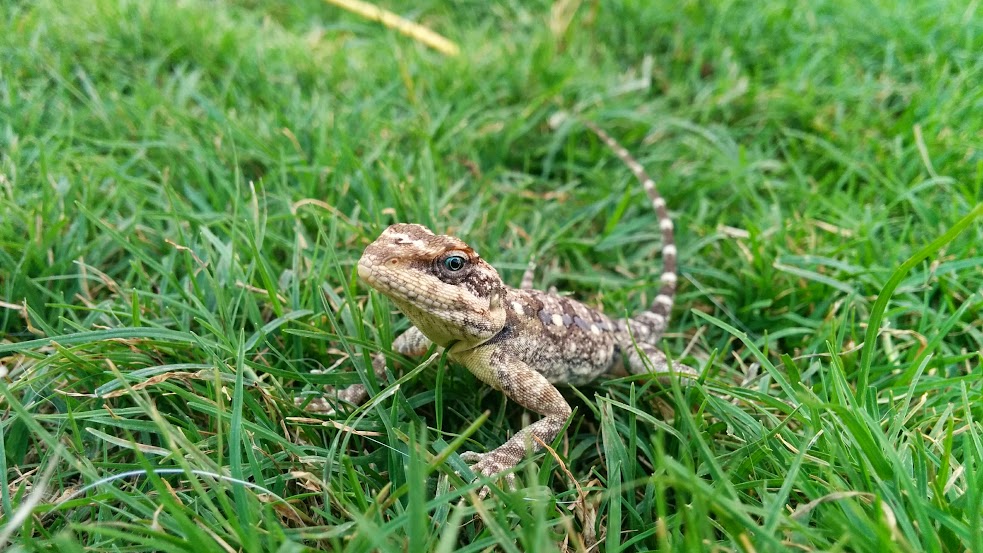 |
| Juvenile Peninsular Rock Agama |
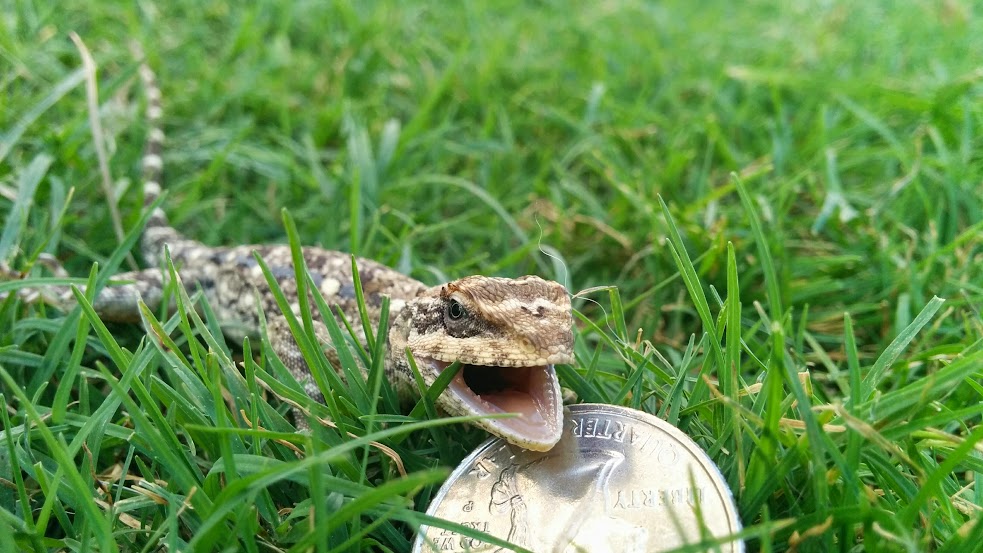 |
| Juvenile Peninsular Rock Agama |
 |
| Juvenile Peninsular Rock Agama |
Next, I found some Mysore Day Geckos while I was moving a pile of sticks. These are probably the most abundant reptiles in my backyard. They are tiny and they live in large numbers. Their babies are so small that they are hard to see, but the yellow stripe running down the back is a dead giveaway. Like most geckos, they have the ability to lose their tail when threatened by a predator. The tail is full of nerves, which twitch and writhe, distracting the predator while the gecko makes a getaway.
 |
| Mysore Day Gecko |
 |
| Mysore Day Gecko |
 |
| Mysore Day Gecko |
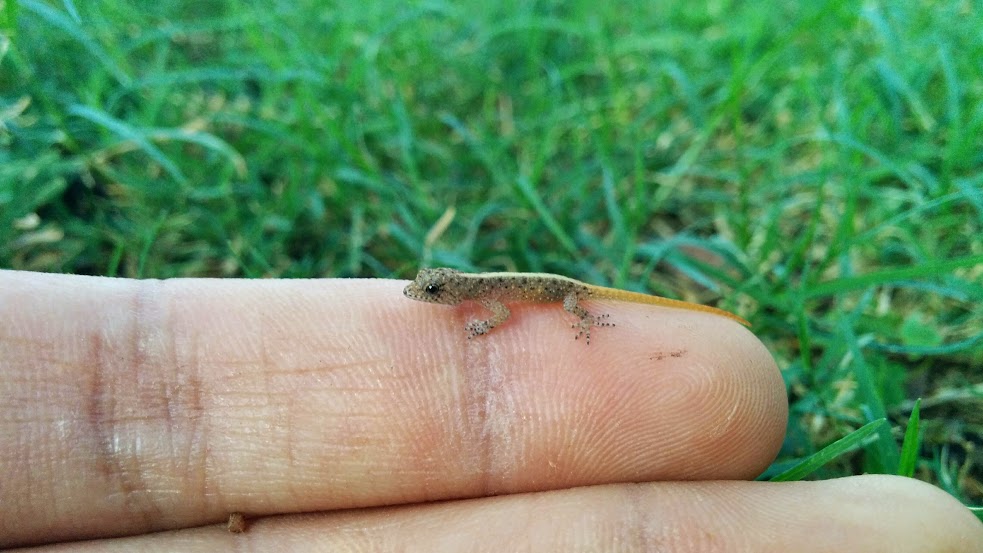 |
| Baby Mysore Day Gecko |
 |
| Baby Mysore Day Gecko |
While moving some flowerpots next to a lamppost, I found 2 Asian Toads half buried in the soil. They come out at night to eat the insects that are attracted by the light. The individuals I found were pretty small compared to others I had seen, which get as big as grapefruits. I took them to the grass for their photo shoot.
 |
| Asian Toad |
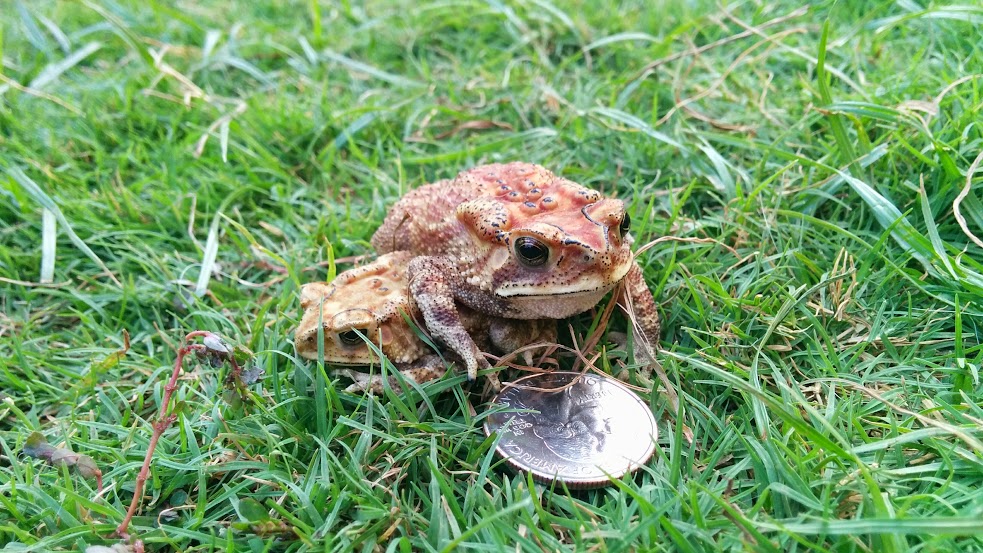 |
| Asian Toads |
 |
| Asian Toad |
 |
| Asian Toad |
A few years ago I found a large pregnant female Asian Toad. These are some pictures of her.
 |
| Pregnant Female Asian Toad |
 |
| Pregnant Female Asian Toad |
One lizard that every Indian is familiar with is the Wall Lizard or House Gecko. They are very common in Indian houses, hiding behind picture frames during the day and hunting insects at night. I had no difficulty finding a good number of these lizards. These geckos are known to lose their tails and grow them back fairly quickly. One of the individuals I found was in the process of growing its tail back.
 |
| House Gecko |
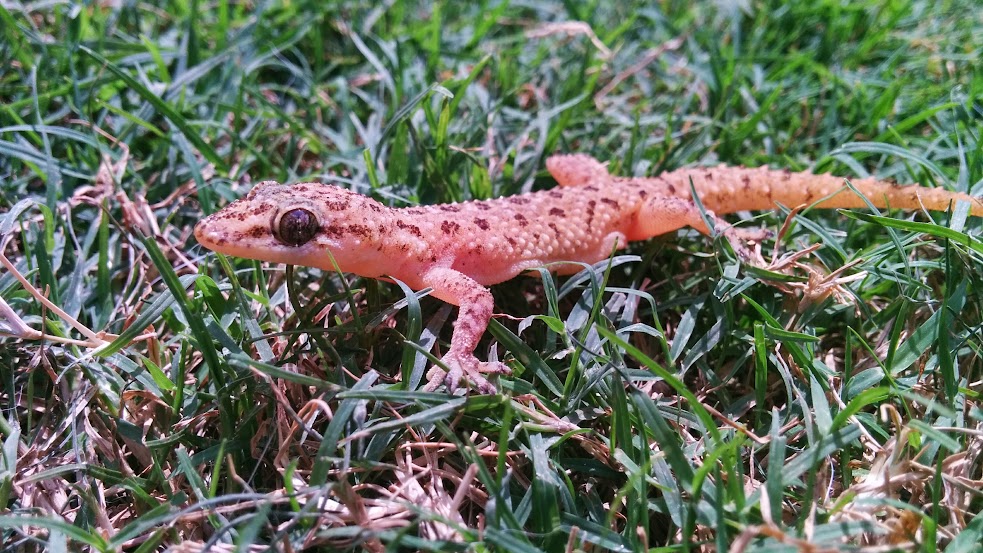 |
| House Gecko |
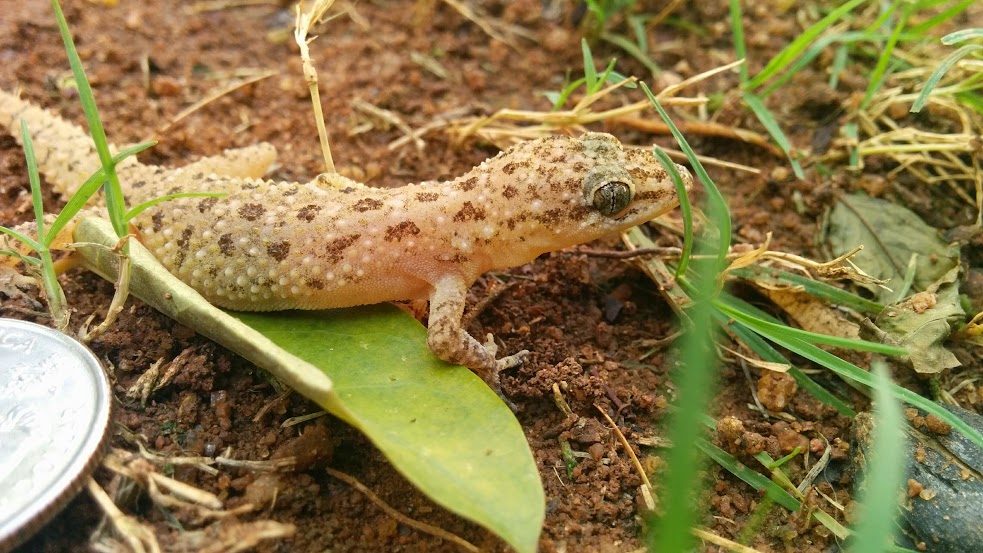 |
| House Gecko |
 |
| House Gecko Regrowing Tail |
Another lizard that most Indians are familiar with is the Oriental Garden Lizard, which is an arboreal reptile commonly found in yards. I saw a large one on the fence separating my yard from my neighbor's. It jumped into the neighbor's yard before I could catch it. Later on I caught a baby Garden Lizard. It looked less than 2 weeks old but it was still energetic and really hard to catch.
 |
| Baby Garden Lizard |
 |
| Baby Garden Lizard |
 |
| Baby Garden Lizard |
Earlier this year I caught a juvenile Garden Lizard whose tail tip had been cut off by a predator or something. As I said before, I wasn't he best at photographing my herps so here is a pretty bad picture of it.
 |
| Juvenile Garden Lizard |
About a week after I came back to India, I caught another juvenile Garden Lizard on my balcony. This one was more colorful than the one I had caught before and had a full tail.
 |
| Juvenile Garden Lizard |
 |
| Juvenile Garden Lizard |
 |
| Juvenile Garden Lizard |
I found some really cool herps by flipping bricks and cinder blocks near my house. Under a large cinder block I found a skink, something I had never seen near my house in the 8 years of living there. I caught it and took it inside to find out what species it was. With the help of the internet I found that it was a Spotted Supple Skink. Since this was a very unusual discovery, I was significantly more excited about it.
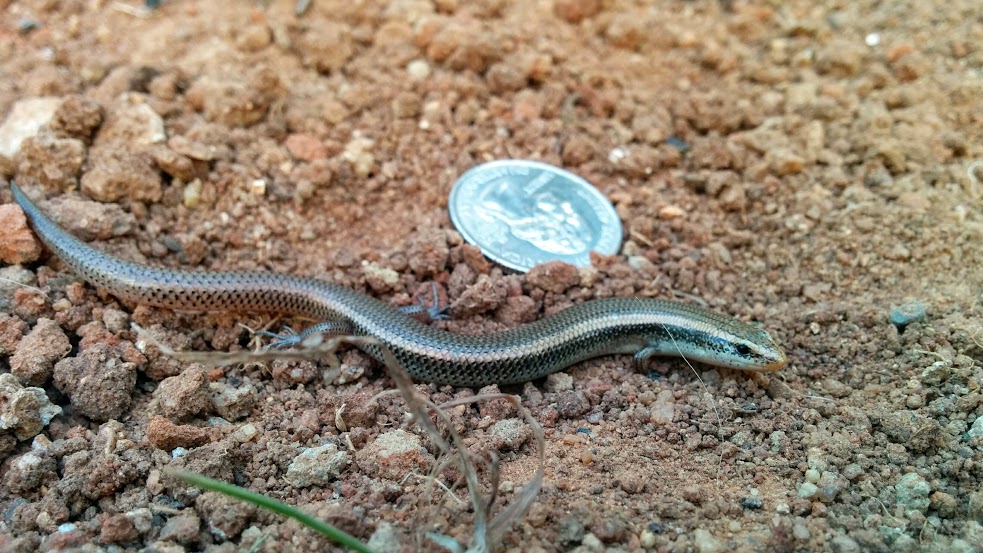 |
| Spotted Supple Skink |
 |
| Spotted Supple Skink |
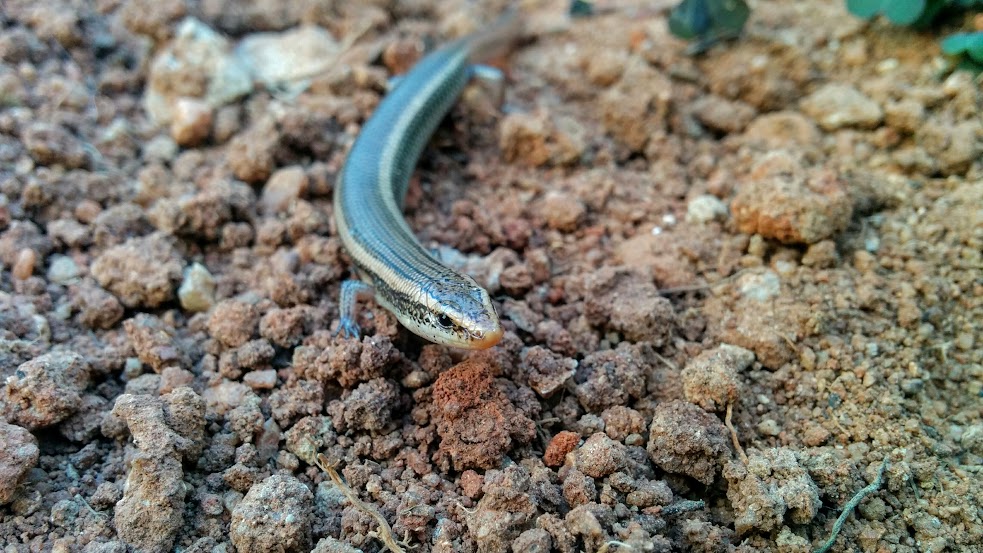 |
| Spotted Supple Skink |
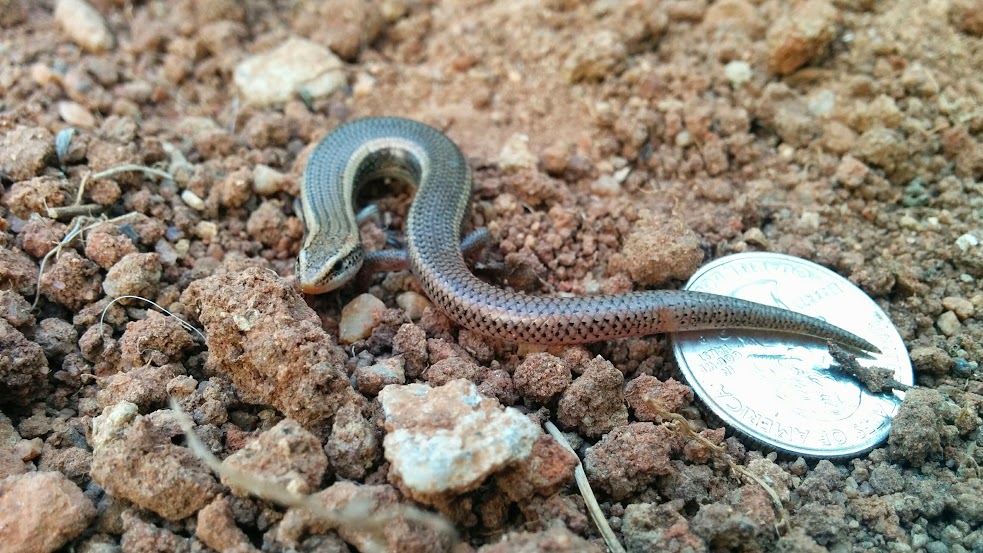 |
| Spotted Supple Skink |
I found another Skink close by but this one dropped its tail as I caught it. Its tail was reddish, suggesting that it was a juvenile.
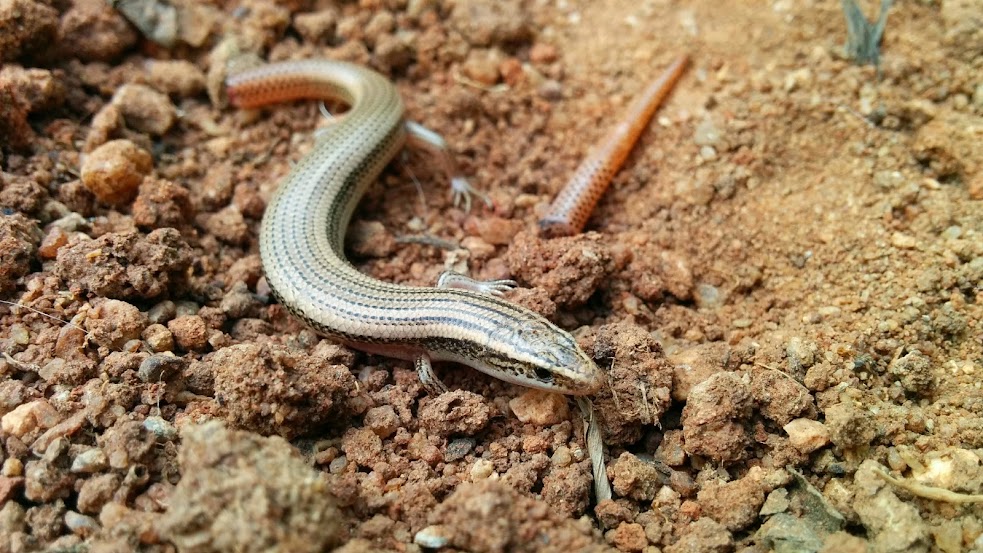 |
| Spotted Supple Skink with autotomized tail |
Under a brick I found a pair of Brahminy Blind Snakes, and I got one before it went down a burrow. This species is probably the smallest snake in the world and this individual was barely 3 inches long. Another cool thing about this species is that it reproduces asexually and all the individuals are female and genetically identical. The snake musked when I picked it up, as most snakes do, releasing an unpleasant odor. I had seen these before in my backyard but they are still pretty rare in this area.
 |
| Brahminy Blind Snake |
 |
| Brahminy Blind Snake |







































